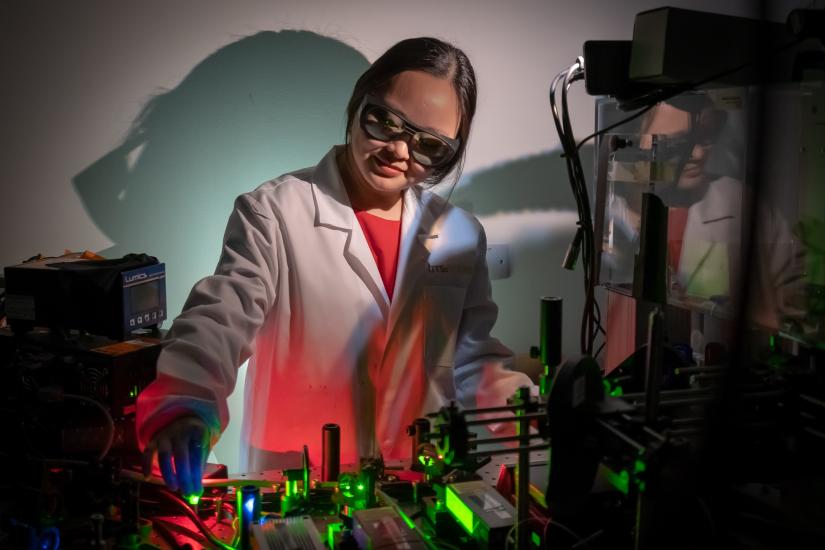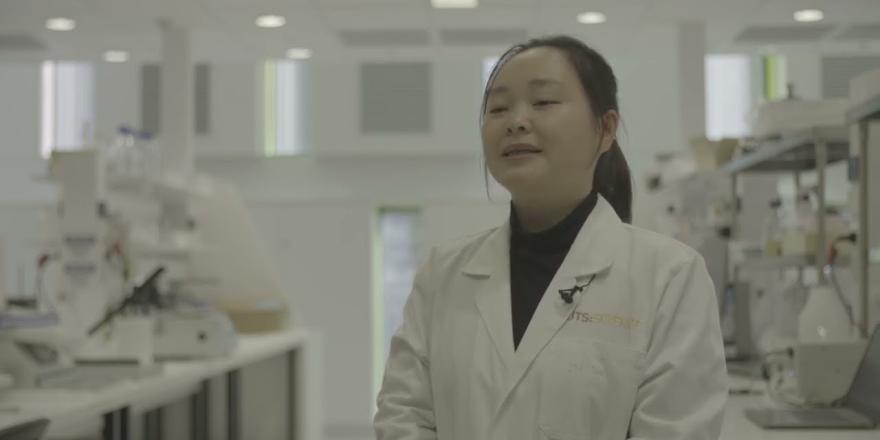Although it's impossible to predict when the next pandemic will occur, scientists unanimously agree it's only a matter of time. Associate Professor Jiajia Zhou and her team are working to ensure we're better equipped next time.

Working to ensure the world is better equipped to handle the next outbreak, Associate Professor Jiajia Zhou, from the UTS Faculty of Science, is leading a team of researchers who are developing a range of innovative disease detection methods.
“Getting ready for the next pandemic is one of our greatest challenges in health and sciences. We need new technologies to detect infectious diseases in places like hospitals, airports, and schools. This is crucial for managing future outbreaks.” says Dr Zhou.
A positive result
During the pandemic, Dr Zhou was part of a research team that developed an award winning Covid-19 test. Working under Distinguished Professor Dayong Jin, the team created a device that could detect the virus within minutes.
“I want to take what I have learned from this experience and develop a new device using similar single molecule detection technology. I hope to create a tool that will change the way viruses are detected,” she says.
Her ambitious plan is to invent technology for monitoring new virus variants with the goal of enabling swift detection and diagnosis.
“In the face of evolving virus mutations, like those seen in the flu and SARS-CoV-2, the urgency for adaptable diagnostic tools is clear. Current multiplexed testing, while promising, faces constraints,” says Dr Zhou.
For example, cross-reactivity due to genetic similarities among pathogens can lead to false positives. The finite range of colours used for labelling limits accurate simultaneous detection. The process of developing probes for new targets is also time-consuming.
“These limitations emphasise the need for innovative solutions that ensure accurate and agile diagnostics in the context of evolving pathogens and their mutations,” she says.
Developing a new device that overcomes these challenges will significantly improve virus testing, patient care and provide quicker outbreak responses.

Getting ready for the next pandemic is one of our greatest challenges in health and science today.
We need new technologies to detect infectious diseases in places like airports, hospitals and schools.
This is crucial for managing future outbreaks.
My name is Jiajia Zhou. I'm a physicist and technology innovator.
During the last pandemic, I played a leading role in our research team at the University of Technology Sydney
We created an award-winning rapid antigen test for coid 19 that give accurate results in minutes.
Making a difference
Over the last decade, Dr Zhou has made a significant impact across a diverse range of disciplines, fields and industries.
Her work has attracted interest from companies such as a2 Milk to improve quality assurance.
“It's always exciting to see the work that my team and I do potentially becoming products or technologies that have real market prospects,” says Zhou.
“Our research is currently being used to profile milk protein variants using multiplexed nanoparticles. This is to help meet the growing demand for milk without A1 proteins.”
Other companies, such as Horti Innovation (an Australian horticultural industry organisation) also showed interest in Dr Zhou’ work. The company considered developing a multiplexed test for rapid diagnostics for multiple foodborne pathogens in fresh produce.
“Although there is a great sense of accomplishment seeing my work used in multiple industries. I am looking forward to the future and helping the world prepare for the next pandemic.”
“Our work holds the potential to revolutionise healthcare and enhance public health outcomes."
Associate Professor Jiajia Zhou
Preparing for the future
Over the next five years, Dr Zhou will focus on taking her work on disease detection from theory to application.
“My goal is to create the upconverting Single Molecule Rapid Antigen Testing (SMART) technology and device. This includes inventing technology for monitoring new variants and concerning viruses, enabling swift adaptation of SMART for targeted testing.”
By focusing on engineering multiplexed nanoprobes, Dr Zhou hopes to change the way viruses are detected.
“We will generate a diverse library of up conversion-based nanoprobes that bind to anti-spike antibodies, enabling sandwich immuno-reactions with virus antigens.”
If successful, viruses such as Covid-19 will be able to be detected quickly and efficiently.
“Timely and precise viral infection identification empowers healthcare systems to enact targeted interventions, reduce transmission, and optimize resource allocation.
“The ultimate goal is to build of a pipeline of innovations that will make Australia a leader in responding to future epidemics.”

